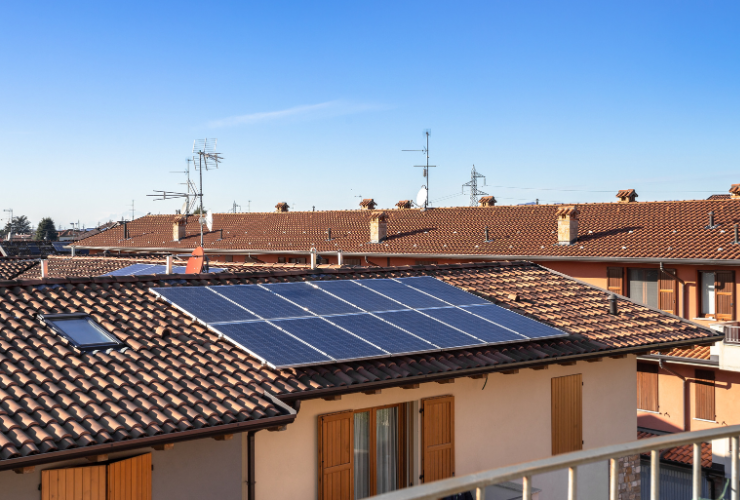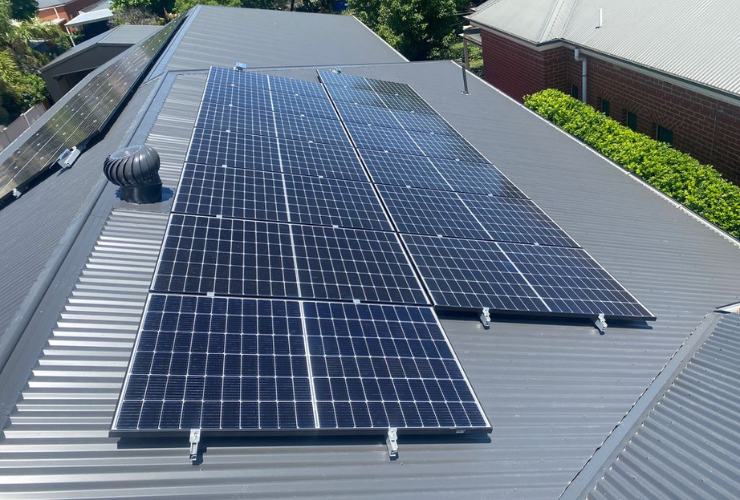Fast read
Considering solar panels in Australia? Timing is crucial for efficiency and savings.
Solar panels work best in sunny weather and cooler temperatures. In northern regions, like Queensland and the Northern Territory, the dry season (April to November) is optimal. In southern areas, such as New South Wales and Victoria, spring and autumn offer the best conditions.
Avoid peak demand times in summer to ensure faster installation and better deals. Also, consider seasonal feed-in tariffs to maximise your return. Plan your solar installation wisely to enjoy the benefits of renewable energy all year round.
The Best Time to Install Solar Panels in Australia
If you’re considering installing solar panels in Australia, you’re making a smart and eco-conscious decision. Solar power is a form of energy that can save you money on electricity. It also helps the environment by reducing carbon emissions.
Choosing the right time of year to install solar panels is important. It can impact their performance and efficiency.
Solar panels work best when the system is installed during certain seasons. The efficiency of solar panels can be affected by the time of year they are installed. In this guide, we’ll explore the best time to install solar panels in Australia, helping you make an informed decision for a successful and cost-effective solar power system.
When deciding on the best time to install solar panels in Australia, several factors come into play, including weather conditions, installation demand, and potential cost savings. Weather conditions are a crucial consideration. During the summer months (December to February), Australia experiences longer daylight hours, providing more sunlight for your solar panels.
However, extreme heat can sometimes reduce the efficiency of solar panels. On the other hand, winter months (June to August) offer cooler temperatures that can enhance panel efficiency, but shorter days mean less overall sunlight.
How Solar Panels Work
Before diving into the ideal time for installation, let’s briefly understand how solar panels work. Solar PV systems produce electricity by transforming sunlight into usable energy through a process called the photovoltaic effect.
They work most efficiently under certain conditions, such as direct sunlight and cooler temperatures. Higher temperatures can reduce efficiency and may affect the lifespan of the panels over time. Sunlight is important for energy output, but the temperature also affects how well your solar panels work.
The best time to install solar panels in Australia depends on getting enough sunlight and good temperatures. Typically, spring and autumn are the most advantageous seasons for installation. During these periods, the weather is generally mild, with plenty of sunlight and cooler temperatures, which enhance panel efficiency. Also, fewer people request installations in these seasons than in summer, which could mean shorter wait times and more installers available.
Additionally, financial incentives and rebates can vary throughout the year. By keeping an eye on these government incentives and planning your installation accordingly, you can increase your savings. Installing solar panels before the peak summer months allows you to benefit from the high solar output and start saving on your energy bills sooner.

Which is the Best Time to Install Solar Panels in Australia for Home or Business?
There are a few factors to consider when choosing the best time to install solar panels. These include:
- Weather: Solar panels work best in sunny weather, so you’ll want to avoid installing them during the winter months when there is less sunlight.
- Demand for Solar Panels: The demand for solar panels tends to be higher in the spring and summer months, so you may have to wait longer for installation during these times.
- Cost of Solar Panels: The cost of solar panels can vary depending on the time of year. Generally, solar panels are more expensive in the spring and summer months when demand is high.
Consider Your Location in Australia
Australia is a vast country with diverse climates ranging from tropical in the north to temperate in the south. The ideal time for solar panel installation can vary depending on your location within the country. Let’s take a closer look at different regions and their optimal installation periods.
Northern Australia
In the northern regions, such as Queensland and the Northern Territory, the climate is tropical, with distinct wet and dry seasons. The ideal time to install solar panels in these areas is during the dry season. The dry season typically occurs from April to November. The dry season offers clear skies and ample sunlight, optimising solar panel efficiency.
Southern Australia
Southern regions, including New South Wales, Victoria, South Australia, and Tasmania, have a temperate climate with four distinct seasons. The ideal time for solar panel installation in these areas is during spring and autumn when the weather is mild, and there are fewer temperature extremes. Spring and autumn provide a balance of sunlight and moderate temperatures, ensuring your solar panels perform optimally.
Western Australia
Western Australia has a diverse climate due to its vast expanse. In the northern regions, similar to Northern Australia, the dry season is the best time for installation. The southwest part of the state has Mediterranean-like weather. The best times to visit are in the spring and fall.
Eastern Australia
Eastern Australia, including New South Wales and Queensland, experiences a humid subtropical climate. The ideal time to put in solar panels is during autumn and winter. During these seasons, the weather is cooler and the skies are clearer.
Consider Seasonal Feed-in Tariffs
Aside from the climate, another factor to consider is the seasonal feed-in tariffs offered by energy retailers. Feed-in tariffs determine the payment for the surplus energy generation by your solar panels and send them back to the grid.
The amount you receive is based on the feed-in tariff rate set by the government. This rate is usually higher than the retail electricity rate. It incentivises the production of renewable energy and helps offset the cost of installing solar panels.
These tariffs can vary throughout the year, and some retailers may offer higher rates during specific seasons. By installing your solar panels during times when feed-in tariffs are at their peak, you can increase your return on investment.

Avoid Peak Installation Periods
Solar panel installers may be busy at times. This can affect the speed of installation and the cost. Remember this when scheduling your installation.
It’s important to plan ahead and be patient. Avoiding peak periods, such as during the height of summer, can ensure a smoother and more cost-effective installation process.
Best time to install Solar in Australia
In Australia, the best time to install solar panels depends on where you live and the weather. In the north, install during the dry season from April to November. In the south, spring and autumn are best for installation. Western and eastern regions also have their specific windows of opportunity for installation.
Additionally, consider the seasonal feed-in tariffs to make the most of your solar investment. By carefully planning the timing of your solar panel installation, you can harness the power of the sun efficiently and enjoy the benefits of renewable energy for years to come.
Making an informed decision about the best time to install solar panels ensures you get the most out of your investment. Whether you are looking to reduce electricity bills or decrease your carbon footprint, the timing of your installation plays a crucial role in the efficiency and longevity of your solar panel system.
To learn more and begin your solar journey, talk to a trusted solar installer near you. They can give you personalised advice tailored to your location and energy requirements.



